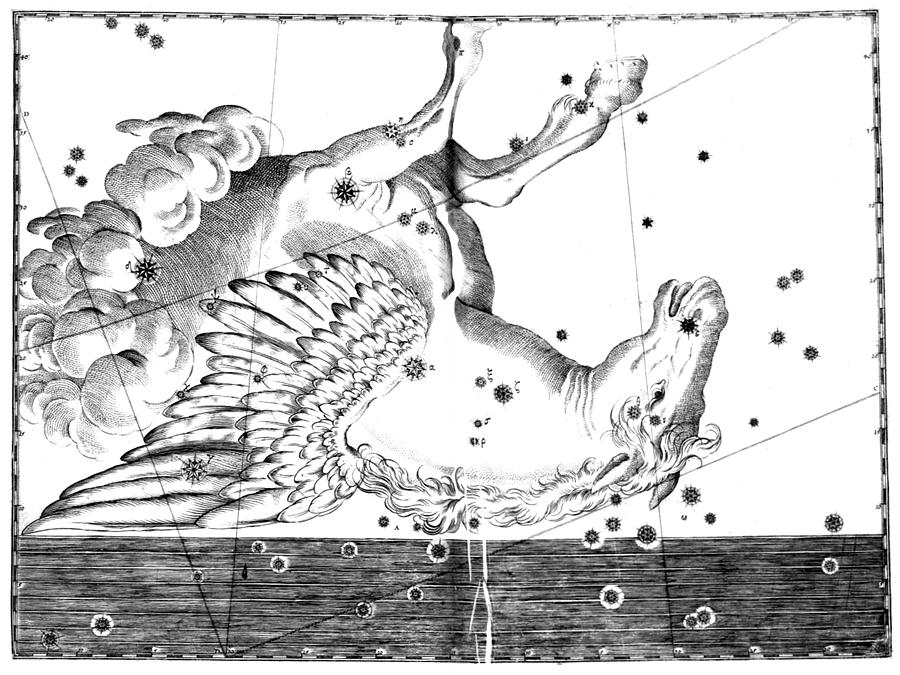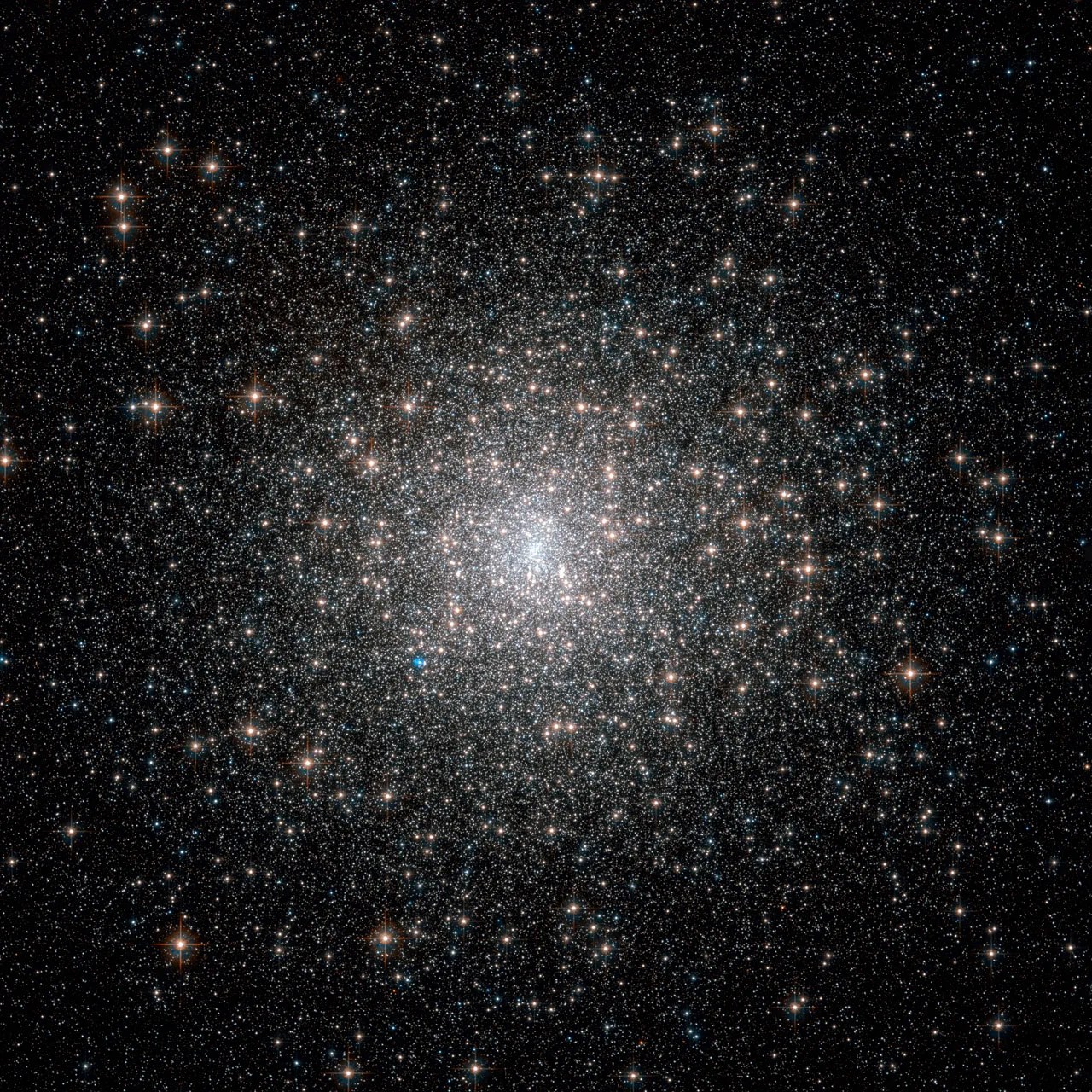Pegasus
We recently look at the stars of Cassiopeia.
Today we look below Cassiopeia in our night sky to find a legendary flying horse.
It’s Constellation Pegasus.
The Myth
Pegasus, the flying horse, features in many stories told by the ancient Greeks.
The best known myth involves the hero Perseus.
Riding Pegasus, he rescued princess Andromeda, who had been chained to a rock on the seashore.
She was intended as the sacrifice to appease a sea monster.

But Pegasus is also involved in other, more lurid, tales.
He was born from blood spilt from the Medusa’s head when she was beheaded by Perseus.
Pegasus had many adventures with the Greek hero Bellerophon.
Together they fought the Amazons and fire-breathing Chimeara.
But Bellerophon grew rather too arrogant.

He flew Pegasus up to Mount Olympus to seek a place among the gods.
Zeus, king of the gods, was not noted for his tolerance.
He sent a gadfly to sting Pegasus.
The flying horse jumped and Bellerophon fell back to Earth and his death.
The unpredictable Zeus did eventually relent.
He granted Pegasus a place in the heavenly stables.
Pegasus pulled his chariot, from which Zeus threw his thunderbolts.
Zeus finally rewarded Pegasus with a place in the sky, the constellation we see today.

Pegasus: Bayer’s Uranometria, 1661
The Constellation
High in the south in autumn, constellation Pegasus is an easy pattern to find.
That’s because its four brightest stars form a big square, the great Square of Pegasus.

Square of Pegasus: Stellarium
Looking at our two Stellarium images, we can trace the flying horse.
The square is the body of Pegasus.
Stars at bottom right make his neck and head: Pegasus is flying upside down.
More stars to the top right make his legs.

Pegasus: Stellarium
Constellations surrounding Pegasus include Andromeda at top left.
The star at the top left of the square actually belongs to Andromeda.
Above Andromeda is the ‘W’ of Cassiopeia.
Below the square are the fish of Pisces and below the head we find Aquarius.
The Stars

Main stars in Pegasus: Stellarium
Let’s follow the Great square from the top left, Alpheratz.
Alpheratz actually belongs to Andromeda but we’ll look at it anyway.
Alpheratz appears as a single star but is actually a pair of stars.
They orbit each other every 97 days and lie neatly 97 light years away from Earth.
Down to the bottom left of the square, we see Algenib.
Algenib is the faintest of the four square stars and lies 390 light years away.
It is 5 times wider than our Sun and shines 5.000 times brighter.
Moving to the bottom right, we come to Markab.
Markab means ‘the saddle of the horse’.
It’s around 133 light years away and 2,000 times more luminous than the Sun.
Finally we come to the top right and Scheat.
Scheat is a red giant star, almost 100 times wider than our Sun and 200 light years away.
My final star makes the nose of constellation Pegasus.
From Markab, we trace the neck of Pegasus then his nose, Enif.
Enif is the brightest star in Pegasus.
A red giant star, it is 185 times bigger than our Sun and almost 4,000 times brighter.
If Enif replaced the Sun, our Earth would be inside it.
Test your Sky!
There are lots of stars within the Square of Pegasus.
However most of the stars are dim.
The number of stars you can see is a test of how light-polluted your sky is.
Pegasus: Stellarium
Try the light-pollution test.
Give your eyes 10 minutes to adapt to the dark.
Then:
*if you can’t see any stars in the square, go back inside, it’s cloudy…
*if you can see up to 3 stars, your sky is badly light polluted…
*up to 6 stars, urban light pollution…
*10 stars, a good dark sky….
*15+ stars – lucky you! Your sky is wonderfully dark and I’m envious.
Deep Space Objects
There is one outstanding deep space treasure in the constellation.
It is a superb globular cluster with the designation M15.

To locate M15 in a telescope, look just beyond Enif.
At low power, you’ll see a misty, round glow of light.
At higher power the glow resolves itself into a ball of stars.

M15, Hubble Space Telescope, NASA
M15 contains 100,000 stars and lies 33,000 light years away.
The cluster is 175 light years across.
It’s a dense cluster with blue and orange stars concentrated towards its centre.
At that centre is an intermediate black hole.
Supermassive black holes at the centres of galaxies can weigh in at billions of times more massive than the Sun.
Stellar black holes formed from supernovae are about 10 times heavier.
M15’s black hole is around 4,000 times heavier than the Sun.
M15 is estimated to be about 12 billion years old.
That’s one of the oldest objects in the universe visible in a small telescope.
It’s certainly worth taking a look at this lovely cluster – and a look back in time!

The author: Dennis Ashton is a Fellow of the Royal Astronomical Society and a Wonderdome presenter.
In September 2024, Dennis received the Special Contribution Award from the British Association of Planetaria.
Would you like to hear more Astronomy news?
Do you want to to find out about our upcoming public events?
Follow WonderDome Portable Planetarium on Twitter and Facebook or go to our web site wonderdome.co.uk



